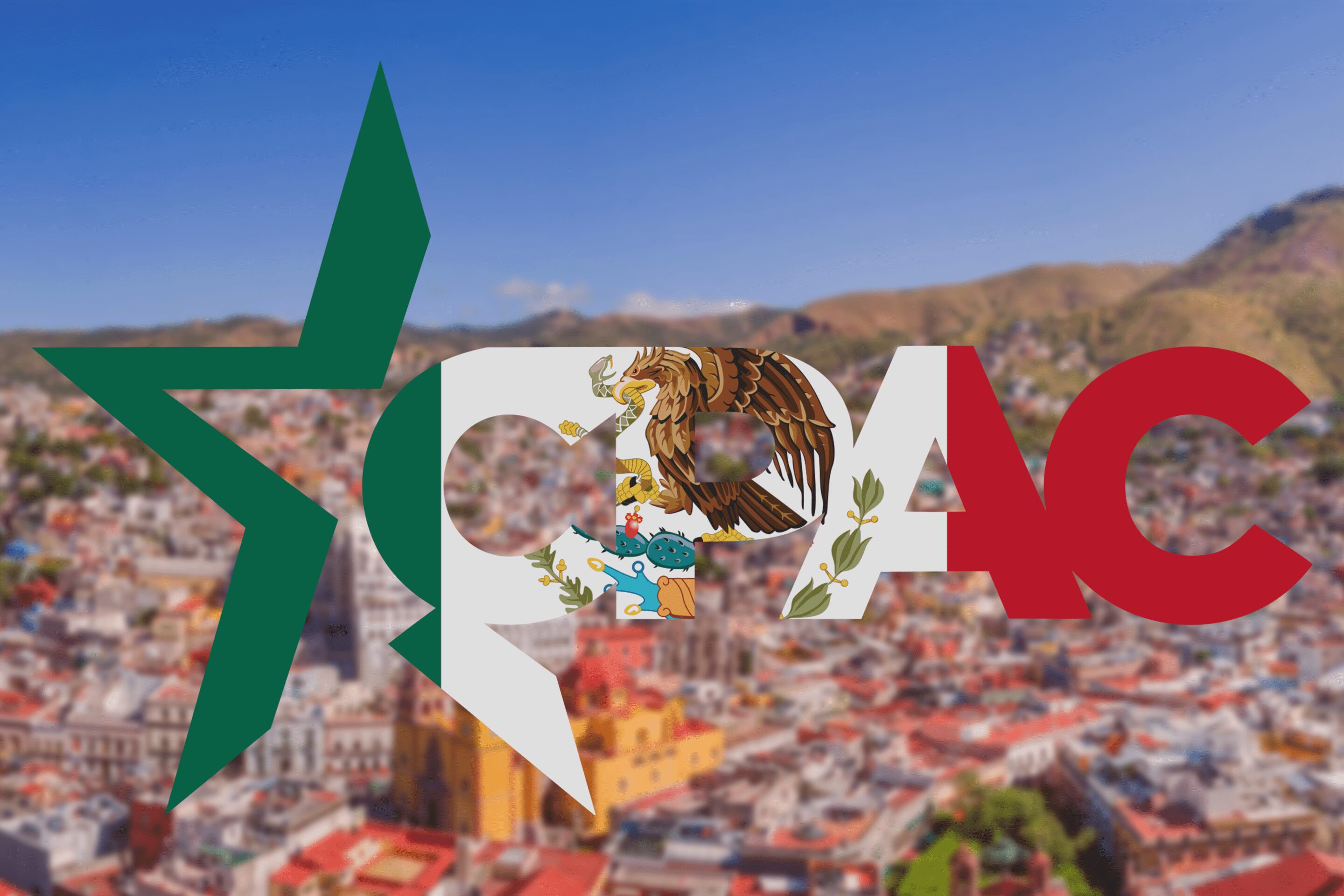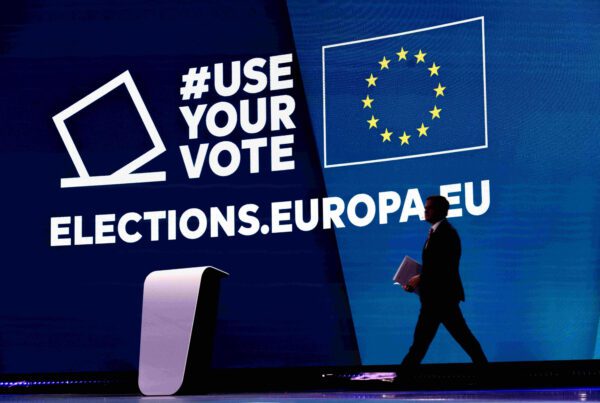Right-wing activists and leaders from around the world descended on Mexico City on November 18 and 19 for CPAC México, the latest international edition of the conservative confab. CPAC México came just one month shy of the fifth anniversary of the first international Conservative Political Action Conference (CPAC), held in Tokyo in December 2017. Since then, more than half a dozen international CPAC gatherings have been organized, including in Australia, Brazil, Hungary, Israel, and South Korea.
Over the course of the weekend, speakers representing almost two dozen countries across North America, South America, Europe, and Asia took the stage to rally the right and decry the alleged depredations of the left. While speaking from a variety of national experiences, they struck a common theme of portraying the right as on the defensive, assailed by the constant threats posed by creeping socialism and communism.
In the first address of the gathering, conference organizer Eduardo Verástegui leaned into this underdog mentality when describing the challenges faced by the right in Mexico, across Latin America, and globally. While warning of the “systematic advance of global socialism,” Verástegui bemoaned the right’s seeming paralysis. He argued that “for too long…conservatives in the region have been defenseless…” and he described the Latin American right as an “orphan.” Casting the right as a heroic victim caught in an existential battle was a frequent motif in other speeches throughout the conference. In a pre-recorded video message played for attendees, former U.S. President Donald Trump stated, “…we must stop the spread of socialism and…not allow it to continue to sweep across this region or our land.” To clarify their claims, conference participants often made specific references to repressive regimes—including in Cuba, China, and the Soviet Union. In fact, following the organizers’ introductory remarks, the first guest speaker was Lech Wałęsa, the former Polish president and leader of the Solidarity movement credited with helping to topple communism at the end of the Cold War. The fight against communism reappeared as a key concern throughout the conference, with a sense of urgency that harkened back to the height of the Cold War more than 50 years ago.
While the global conflict between right and left served as the orienting drama of CPAC México, this broad theme materialized via a series of specific contrasts regularly raised by participants. These contrasts were often framed as battles from which the right must emerge victorious, of which five stand out as particularly noteworthy: democracy vs. authoritarianism; order vs. disorder; sovereigntism vs. globalism; new right vs. old right; and unity vs. disunity. While these themes have a long lineage on the far right, they speak to the perspective of the contemporary far right and the path being charted via efforts to encourage greater international cooperation.
Democracy vs. Authoritarianism
While the illiberal and increasingly undemocratic tendencies of the right in countries such as Hungary and the United States have been widely noted, speakers at CPAC México attempted to flip the script and present themselves as the true champions of democracy and freedom. Left-wing leaders were regularly derided as demagogues and autocrats who threatened the basic freedoms ordinary people hold dear. As Santiago Abascal, the leader of Spain’s far-right party Vox, stated, “the socialist and communist offensive is ending democracy and individual liberties on both sides of the Atlantic.” Frequently mentioned as under particular threat were the freedoms of religion and speech, both of which were portrayed as falling victim to the censorship demanded by “wokeness” and “cultural Marxism.” Economic freedom was also invoked, although it was certainly no match for the cultural concerns at the center of contemporary far-right politics. This also reflected the fact that opposition to the welfare state has taken a back seat in many far-right parties around the world. Instead of opposing it altogether, many place more emphasis on denying benefits and state resources to immigrants, but preserving them for citizens. Furthermore, in many cases, speakers used the word “freedom” without any additional qualifiers—allowing it to serve as a catchall term embodying any and all far-right grievances against the status quo. Unsurprisingly absent from the gathering was any serious self-reflection on the right’s own role in current trends of democratic backsliding, which most experts would assert has been primarily fomented by the right.
Order vs. Disorder
Beyond concerns about democracy and freedom, speakers at CPAC México regularly contrasted their vision for an ordered society rooted in traditional institutions with the alleged disorder and chaos offered by the left. In his opening speech, Verástegui lamented the left’s incessant attacks on institutions such as the traditional family and the church, which he interpreted as a step backward for societal progress and development. Yet, underlying this theme was a deeper claim—that the abandonment of traditional institutions has not only produced a society in which conservative values are no longer universally accepted, but that contemporary society lacks any fundamental organizing principles or institutions. The feeling that modern life lacks roots in any shared institutions, norms, or purpose motivated many speakers’ desire for a conservative revival to banish the instability and disorder they associated with the left. Religion—especially Catholicism—featured prominently as a linchpin of this conservative response to social disorder. Speakers regularly cited their religious beliefs and identities as foundational to their politics—in fact, each morning of the conference began with a Catholic Mass. Thus, CPAC México drew a sharp contrast between the alleged irreligious disorder promoted by the left and the religiously-based order championed by the right.
Sovereigntism vs. Globalism
Despite CPAC México being an international conference that celebrated its cross-national reach, participants remained firm in their defense of national sovereignty in the face of globalism. Support for sovereigntism appeared both in how speakers addressed the challenges faced by the right around the world, as well as in how they articulated the nature of their shared mission. Regarding the former, socialism and communism were frequently tied to “globalism” and the “globalist agenda,” which at its heart was perceived as inherently inimical to national independence. Beyond casting “globalism” as a dangerous process, participants frequently denounced “globalists” who conspired for the destruction of national sovereignty. This discourse had clear antisemitic implications, particularly when specific Jewish figures were targeted (e.g., George Soros). In terms of the international nature of the far-right’s shared mission, speakers often presented their collaboration as a form of mutual aid in support of separate battles against the left carried out in each respective country. Thus, the benevolent internationalism of CPAC was not to be confused with the malign globalism of the left.
New Right vs. Old Right
Although their focus largely concentrated on challenging the left, speakers at CPAC México occasionally expressed their ire toward the mainstream right, which was portrayed as traitorous and in cahoots with malicious globalists. Verástegui condemned those on the mainstream right as “wolves in sheep’s clothing,” later referring to them simply as “little wolves.” Whereas the old right was associated with electoral defeat and globalist policy concessions, the new right promised a firm, unrelenting defense of conservatism. The old right’s apparent betrayal of true conservative values provided a justification for the new right’s claim to ownership of the conservative movement. Furthermore, it bolstered the new right’s ideological credentials and legitimized its leadership of the international right-wing movement.
Unity vs. Disunity
The final battle being waged at CPAC México involved the organization of the right itself. Speakers frequently urged activists to prioritize the unity of the right—both domestically and globally—as the only way to defeat the left. As Trump stated, “It is so important for conservatives from across the hemisphere to come together to defend God, family, and country…” Likewise, Abascal implored, “It is very important that conservatives around the world join forces, work together, and develop shared strategies.” They also warned that the nefarious forces of socialism, communism, and globalism would work tirelessly to sew disunity among the right-wing ranks, requiring steadfast loyalty and commitment in response. This call for unity was so central that it was reflected by the conference’s official hashtag: #TogetherWeAreStronger.
Conclusion
CPAC México showcased the international nature of the contemporary far right. While many speakers discussed the challenges and triumphs of the right in their own nations, their stories reflected broader themes common to the right globally. Presenting themselves as forces in defense of democracy, freedom, order, tradition, stability, and sovereignty allowed the assembled right-wing leaders and activists to favorably contrast themselves with the purported threats posed by the resurgent left. This discursive strategy is not new—as it mirrors how many far-right parties have successfully normalized themselves over the past decade. As the transnational linkages between right-wing movements continue to strengthen, it will be important to examine how their cooperation deepens in the course of everyday politics, in addition to the structured interactions of strategic gatherings such as CPAC México.







